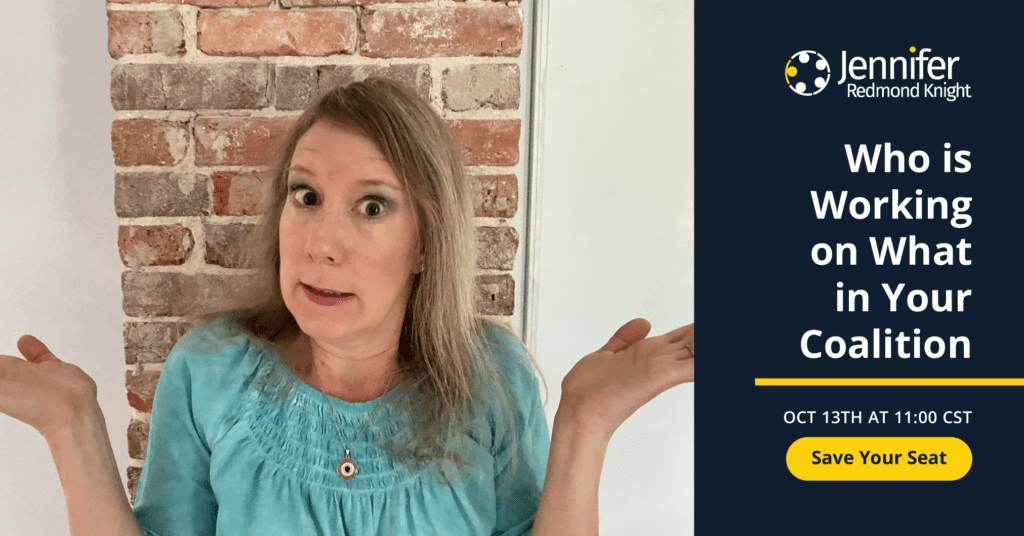One of the most important and challenging aspects of leading a coalition – or really any team – is getting clear on roles. When we find ourselves overwhelmed by all of the work or frustrated that no one is volunteering, unclear roles and realistic expectations are likely part of the problem. While our vision for the coalition is to be a group that works together to do more than we could do our own, the actual work of the coalition varies tremendously based on the position and the person. In most coalitions, you have a few (or sometimes only one) paid staff, leaders and members or partners. Although you have a shared passion and interest for the work, what role you play in a coalition as staff vs. leaders or members is different. Once you have considered what you need to be doing as a coalition, join me this week for four actions to clarify who is going to do the work of the coalition.
Review
Consider the past 3 months. Write down the activities or tasks you have completed. Reflect on the following questions: What roles have staff played in the coalition? What roles have leaders played? What roles have members played? Focus on what people have actually done rather than what they said they would do.
Reflect
As you reflect on what has been done, does this align with your expectations? For instance, did you expect your coalition leaders to convene a workgroup meeting but the group did not meet? Did you expect your members to read the materials prior to the meeting but no one read them? Did you expect your staff to facilitate the meeting but your leaders were the ones who facilitated? When you can compare what you expected with what actually happened, you will be able to better understand realistic roles for each group. Also, consider specific roles for your different staff members and leaders. You may have some staff who are in the right “fit” while others need to be doing something different. You may have some workgroups that are able to fulfill specific roles while others are not. Since each group and each person can be different, spend time reflecting on both similarities and differences in order to gain clarity in roles and expectations.
Discuss
Discuss what you discover with your staff, leaders and members or partners and consider how to apply what you learned to your future work. Listen closely. Understand what roles are most important for each group. Remember your purpose as a coalition. When you take the time to discuss and clarify roles and expectations, you create ownership from your coalition staff, leaders and members that will result in more engaged participation.
Decide
Develop realistic (and possibly revised) roles. Even though you may have expected your coalition leaders to convene meetings, this may need to be a staff role. Alternatively, your coalition leaders may want to contribute to developing the agenda, help with facilitating the meeting or recruiting new members. You may also have some members or partners who would like to play a more active role but have never had the opportunity to contribute in a specific way.
When your coalition work becomes overwhelming, confusing or unclear, practice these four actions in order to support clarifying who is doing the work of the coalition: Review, Reflect, Discuss and Decide. You will likely need to briefly go through this process at least once a year because the people and partnerships in your coalition will likely change.
What about you? What is your next step to get clear on who is doing the work of your coalition?
If you are ready to discuss this further, join me for my next FREE Live Masterclass, Who is doing what in your coalition!

Photo by Jason Goodman on Unsplash

